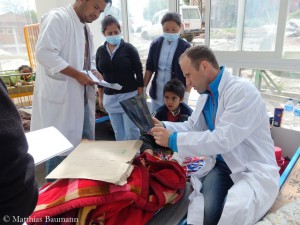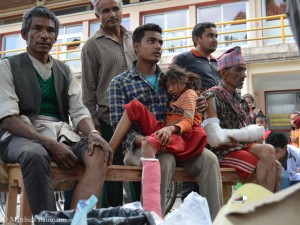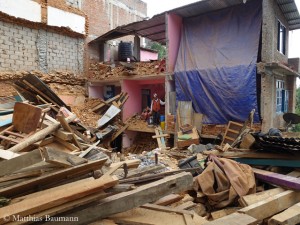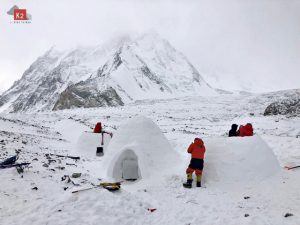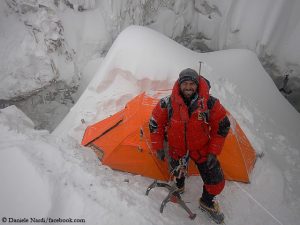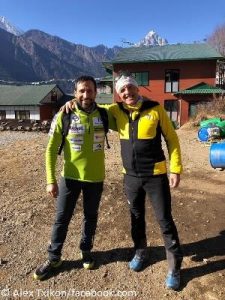Matthias Baumann (currently in Nepal): “Organized chaos”
He did not hesitate. When the first reports on the devastating earthquake in Nepal came in, the German doctor and climber Matthias Baumann packed his stuff. The trauma surgeon from the town of Tuebingen flew to the disaster area in order to help. For more than a week, the 43-year-old worked in a hospital in the mountain town of Dhulikhel, 25 kilometers east of the capital Kathmandu. Before he will fly home on Sunday, he wants to make another trip to the countryside to get an overview about the situation there and to help wherever he can.
Matthias, you have now been in Nepal for one and a half week. How long did you work each day?
We started in the morning at 8 a.m. with a meeting of all senior doctors and nurses. We discussed what was needed at the hospital and at the ambulance stations in the countryside. Then we got going. There were no prescribed working hours. Everyone worked as long as he was able to do so. Mostly I left the hospital at 10 or 11 p.m.
What was your job in the hospital?
I spent most of the time in the operating room. We were treating particularly fractures of arms and legs. From time to time I joined the team in the emergency room.
Where did the patients come from?
Dhulikhel is an hour’s drive east of Kathmandu, it is very hilly there. The city is situated at the road to Tibet. Therefore we got patients particularly from the eastern mountain regions. For them, it was the first major hospital on the way to Kathmandu.
Are these people traumatized?
Yes, definitely. But I admire them for accepting the situation without complaining. They have suffered an incredible fate: They lost their loved ones; they had a long way to come to the hospital; they have to sleep in the corridor or even outside; they have to wait perhaps for hours in front of the operating room until it’s their turn. But they deal with it patiently, without complaining about the conditions. After all, it is an organized chaos, because the patient flow is so great.
Is the situation outside the hospital chaotic too?
My impression is that the situation in the countryside, especially in the mountainous regions, is not yet under control. In the last two days, our hospital organized shuttle flights by helicopter to very remote villages in the Langtang region. I have seen terrifying pictures. These villages have just disappeared. But our help could only be selective. I think there are still villages which no one has reached since the earthquake two weeks ago.
Do they still bring in injured people from these areas, or only dead?
In the mountain villages, most bodies were burned quickly in order to prevent epidemics. They still bring injured from mountain villages, but of course not as many as at the beginning.
How do the people of Nepal assess their future?
Recently, someone told me that Nepal was set back by 20 years. I did not only stay in hospital but made some trips outside the city of Dhulikhel. The damage is incredible. I think it will definitely take years to rebuild the country. On the one hand you can feel a great cohesion of the Nepalese people. On the other hand they are all traumatized. Yesterday someone told me: “We suffer!”
Are the Nepalese afraid of getting forgotten, when the earthquake disaster will disappear from the news headlines?
From time to time I hear that. Otherwise, Nepal is popular throughout the world, not only because of its beautiful mountains, but mainly because of its nice people. There is a huge number of international aid agencies working in the earthquake zone, in some places almost too many. And so many individuals have come here in order to help the earthquake victims. I do not think that the Nepalese will be forgotten.
P.S. Matthias Baumann has launched a fundraising campaign for the earthquake victims in Nepal – like he did before for the families of the avalanche victims 2014 on Everest.



